Your sales team could be grossly underperforming. That’s a bold statement, but the stats offer proof: in 2020 alone, 40% of businesses didn’t meet their revenue targets.
If your manufacturing company struggles to hit performance targets, you shouldn’t worry. There’s good news—when you improve sales operations, you can shift your manufacturing company into top gear and move towards increased profit.
A formal sales operation strategy allows you to complete tasks faster, helping enable and support frontline teams. Whether it involves processing quotes, driving sales through data, or automating workflows, your sales ops will save time and close more leads, improving your bottom line.
In this post, you’ll learn about the primary functions of your sales ops team and how you can set up and streamline sales operations in your manufacturing company. Let’s start at the top.
What is Sales Operations?
Sales operations refer to a comprehensive set of systems a business deploys to support its sales teams and help drive repeat selling. It is the high-level approach towards enhancing and improving any existing sales processes within your manufacturing company. For example, some of the daily tasks of your sales operation team might do include:
- Lead management
- Sales strategy development
- Sales training
- Data analytics and reporting
Each task can increase the performance of your sales teams. It is the job of your sales operations professional and any connected sales systems to help boost productivity and total sales volume whenever possible, leading to better conversion rates and overall business efficiency.
What are the Core Functions of a Sales Operations Team?
The responsibility of your sales ops team is more complicated than any basic sales process (i.e., prospecting to follow-up). And while the roles of a sales operations team may vary across manufacturing companies, your sales ops team needs to perform several core functions.
1. Strategy

If your sales team is unproductive or fails to hit sales targets, a sales operation professional must devise new methods to improve conversion rates. Your sales ops team can create a high-level sales strategy that meets your company’s revenue target.
Common tools that a sales ops team might use to build a sales strategy include:
- Data analysis
- Sales forecasting
- Sales methodology evaluation
- Sales territorial planning
- Goal setting for the sales team
- Developing strategies that shorten the sales cycles
Download Free Template
The sales strategy helps turn a company’s sales goals into sales and coordinates the day-to-day operation of the sales team in accordance with company guidelines.

2. Operations

The operations function of your sales ops team is crucial because it involves the hiring and onboarding of your sales team. It’s important to hire the right personnel because an improper hire or unmotivated team member can have a negative impact on your entire team, which may adversely affect productivity and revenue goals.
Allow your sales operations team to build the workforce they need to accomplish your manufacturing company’s revenue goals. When possible, give complete autonomy over the following tasks:
- Hiring and onboarding
- Product training
- Creation of market intelligence support
- Point of contact communication
- Contract lifecycle management
3. Performance

The overall objective of your sales operations team is to have a high close rate in the shortest time. To achieve those success metrics, sales ops teams can implement several internal programs that improve the performance and output of your sales reps.
- Creating incentive or compensation-based programs
- Coaching and mentoring sales reps
- Optimizing the sales process
- Executing salesmanship best practices
- Outlining sales metrics and key performance indicators (KPIs)
- Optimizing CRM tools, data analytics, and sales automation
How to Set Up Sales Operations in Your Manufacturing Company
If you haven’t taken advantage of sales operations within your business, use the following four steps to integrate a sales ops team and boost your company performance.
1. Define your company processes
Defining your manufacturing companies processes prevents chaos in your sales ops departments. Since sales operations apply to many solutions and functions, you need to prioritize according to your needs.
If you operate a small manufacturing company, you could decentralize your sales ops team to increase efficiency. In contrast, large manufacturing companies might find decentralization a problem that could lead to sub-optimization.

Ultimately, your preferred route depends on how your sales ops team handles bottlenecks in the sales process. Be sure to integrate new operations into existing infrastructure like CRMs, sales quoting, or product configurators.
With a clear understanding of your sales workflows, you can optimize your sales teams to increase efficiency and conversion volume.
2. Agree on key performance indicators (KPI)
Running your manufacturing company on gut feeling is less than ideal. So what should you do? Set KPIs for your team.
KPIs enable your sales ops team to identify the frontline sales reps that consistently hit revenue targets and pinpoint any agents that aren’t delivering a good return on investment (ROI) for your company.
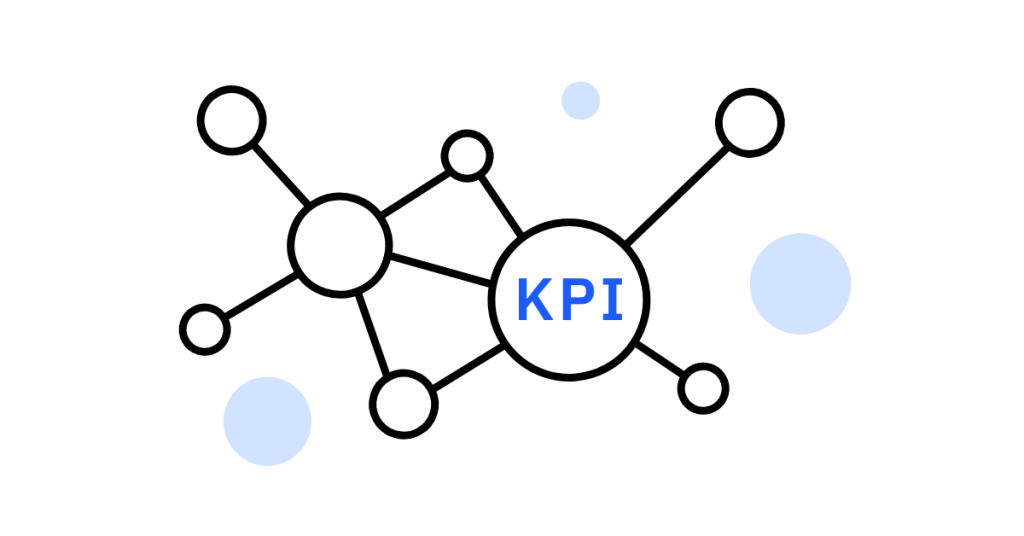
Tracking your KPIs also provides data on the best and worst-performing departments within your sales team. Use the data to determine your team’s overall strengths and weaknesses and then act upon them to correct or improve performance.
For instance, if you’ve set your close rate at an ambitious 35%, you can divide the KPIs across different sales reps or departments. Now, when a particular KPI isn’t met, it’s easy to track, perform evaluations and make improvements.
3. Structure your team
How you structure your sales team can have a massive effect on the team’s total output.

Ask the following questions to help you optimize the structure of your sales team:
- Do you have the resources for managing the sales team?
- Is your management style suited to your preferred sales team structure?
- Would you like to encourage a highly competitive environment for your sales team members?
- Do you want a flexible environment for your sales team?
- Do you like sales team members to work in groups?
The answers to these questions will help you create a sales team that can collaborate, work efficiently, and boost company productivity.
4. Find the appropriate tools
Like any job, sales ops teams need a suite of sales intelligence tools to optimize performance and closing rates. With powerful software solutions, your frontline sales team can meet their targets.

Select sales operations tools that offer benefits to you and your manufacturing company. With the right solutions, your Sales Ops teams can increase your sales opportunities and reduce friction in your marketing pipeline.
How to Streamline Your Sales Operations
Now that you know how to set up your sales ops team let’s see how you can optimize your sales operations for business efficiency and customer satisfaction.
Product configurators
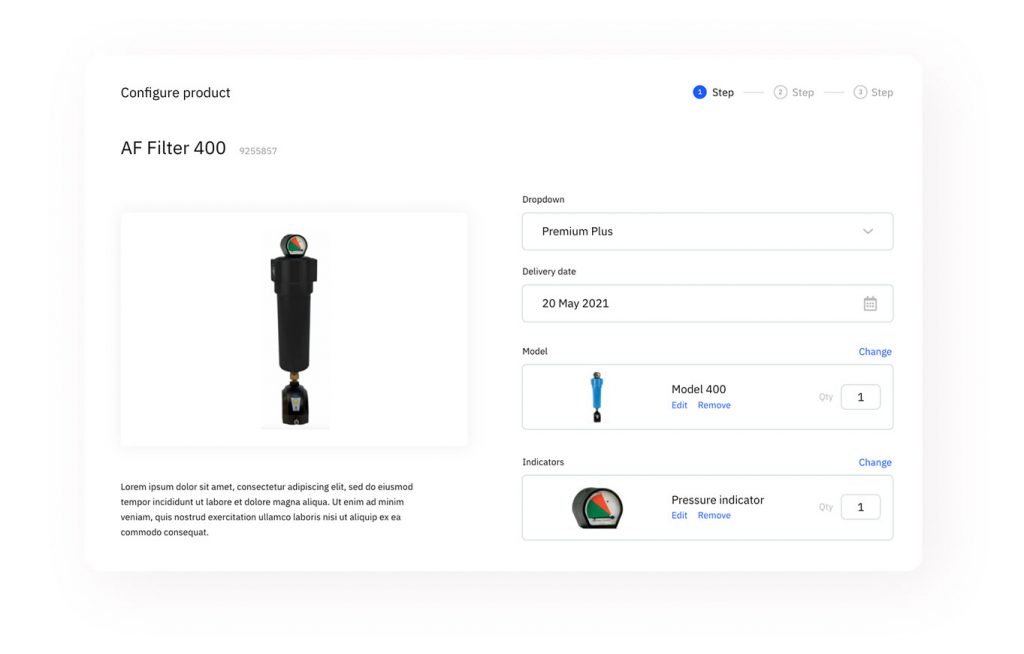
A product configurator is an automation-driven sales operations software that enables sales reps (and end customers) to customize product specifications, accelerate quote timelines, and optimize production and sales processes.
With a product configurator like SaleSqueze, you can create a high-quality buying experience for your customers. The tool offers several great benefits to the user experience, as they can use it to do the following:
- Visualize their preferred product in 2D and 3D forms
- Design custom products
- Learn about your product pricing options
- Enjoy a smooth transition to the buying phase
The software also lifts the pressure from your sales reps, as they won’t need to remember every detail about your products, options, and pricing.
The result? Your sales team will invest more of their time into hitting revenue targets.
In Simon Sturman’s words, CEO of Birkdale Manufacturing Group Limited:
“After implementing the SaleSqueze Product Configurator, we increased our sales qualified leads by 371% and improved conversion rates to 7%.”
Automated quote generators
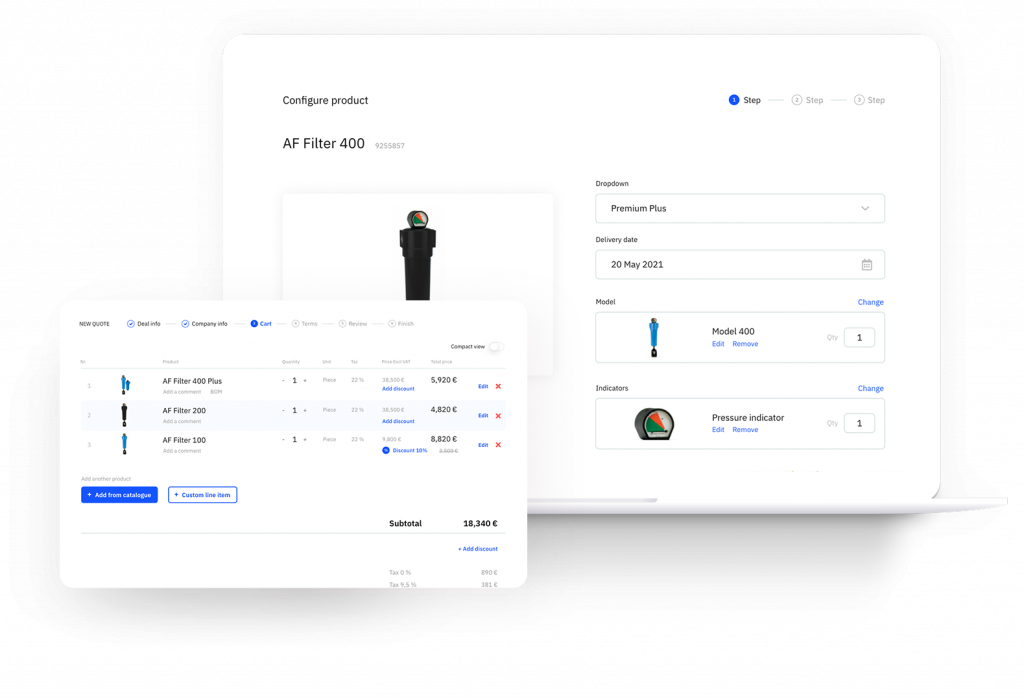
Automatically generating quotes is one of the many benefits that a CPQ sales system offers. A CPQ software uses your preprogrammed rules to create error-free pricing and accelerated sales cycles. Discounts, account quantities, customizations, and optional product features are all taken into account by the software. Because CPQ quotes are error-free and automated, they:
- Positively impact your bottom line
- Improve the efficiency of your frontline sales team
- Increase your customer satisfaction
In a study by the University of Aberdeen, manufacturing companies that use a CPQ system saw a 105% increase in deals compared to non-CPQ users. Automate your quotes when possible to improve sales.
Backend solutions
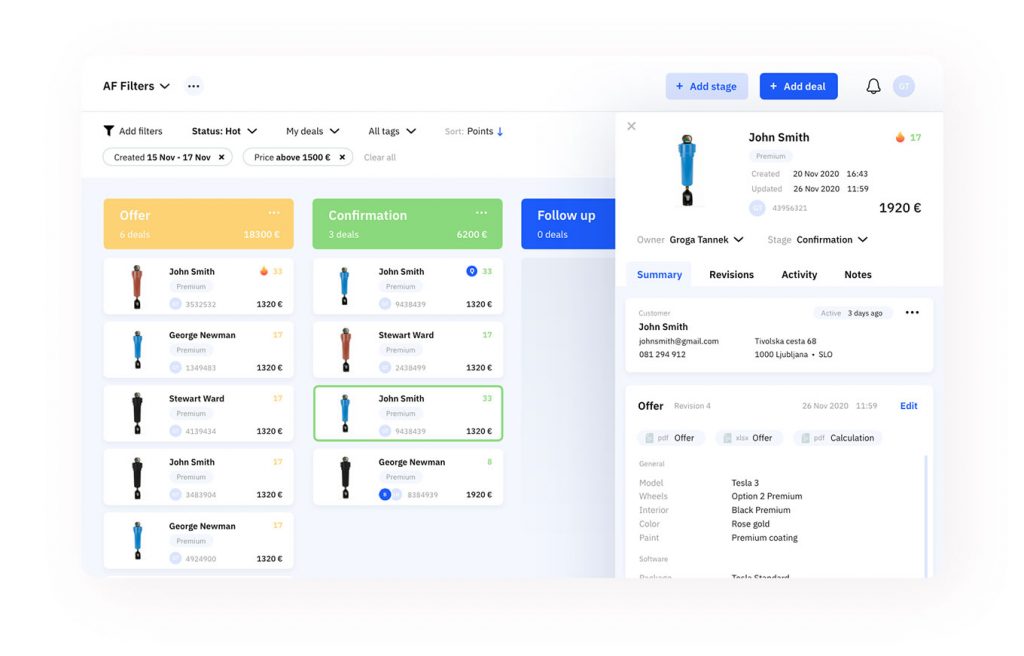
Sales teams benefit from analysis and data-driven insights provided from the back-end of any software solution. You can monitor performance with high-level visibility of your entire pipeline, helping your sales ops professionals make informed decisions regarding your sales.
Sales teams can use data for real-time updates on customer quotes and follow-up on a deal’s progress. Improvement in decision-making will lead to efficiency increases, so implement backend solutions into your operations.
CRM and ERP integrations
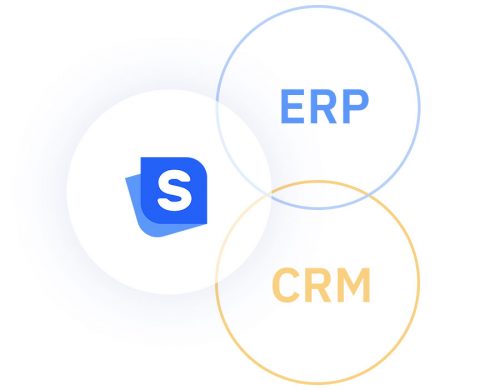
Integrating your CRM with enterprise resource planning (ERP) software helps to improve communication flow among all departments in your company. Your organization can leverage such software connections to process a customer’s order in real-time, resulting in several benefits:
- Increased synergy among your sales ops and inventory team
- Improved process efficiencies
- Easy access to information
- Reduced costs from ineffective technologies
Adopting an ERP may have initial overhead costs. However, the ROI in terms of lower administrative costs and increased productivity far outweighs the expense of integrating an ERP with your CRM.
Product catalogs
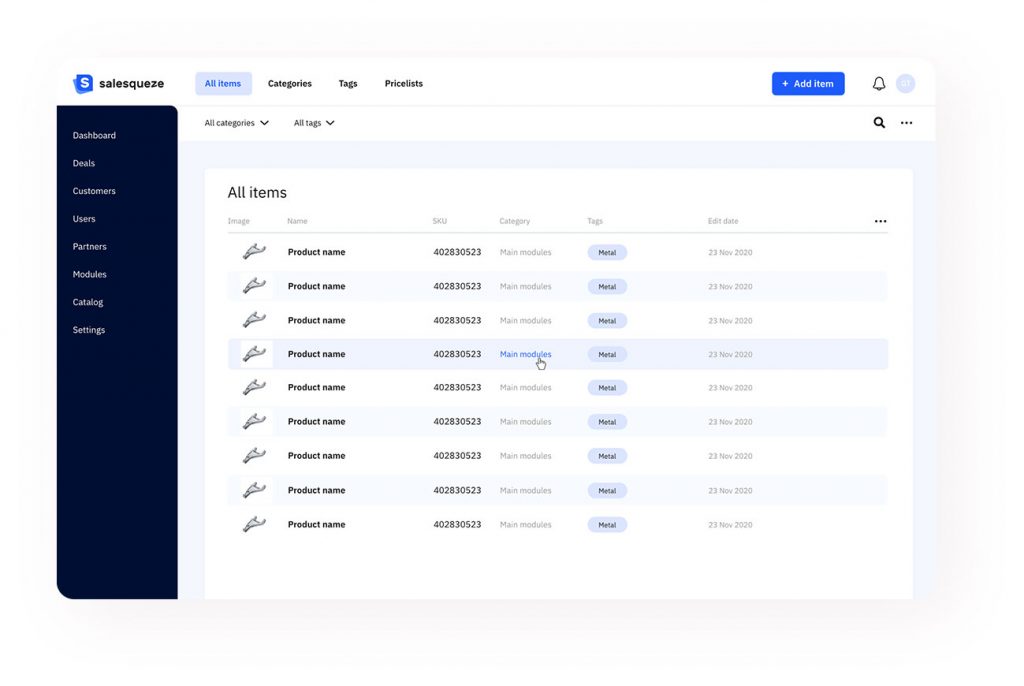
Having a product catalog is vital for the automatic tracking of product materials, costs and prices. As a software solution, you can use a product catalog to define and organize your product types, inventory quantity, planned discounts, and different currency uses.
Like the other benefits of streamlining your sales operations, a product catalog reduces the length of your sales cycle and improves conversion rates. By providing product information digitally, you can limit the time sales reps spend answering customer queries. And since your prospects have all the product info they need, they can enjoy a smoother, shorter customer journey.
Wrap Up
Even the best sales professionals need a little help. When you have a manufacturing company and big ambitions of scaling to higher profit levels, it’s important to equip your sales team with the support and tools they need to succeed.
Sales operation systems can help optimize the sales process and empower your employees to consistently close leads and hit revenue goals. By leveraging digital sales intelligence software and fine-tuning to meet the needs of your specific team and customer base, your company will be miles ahead of the competition.
You can take advantage of SaleSqueze and its suite of sales operations tools to improve the buying experience for your customers, make sales easier for your team, and ultimately increase business performance and profitability.
